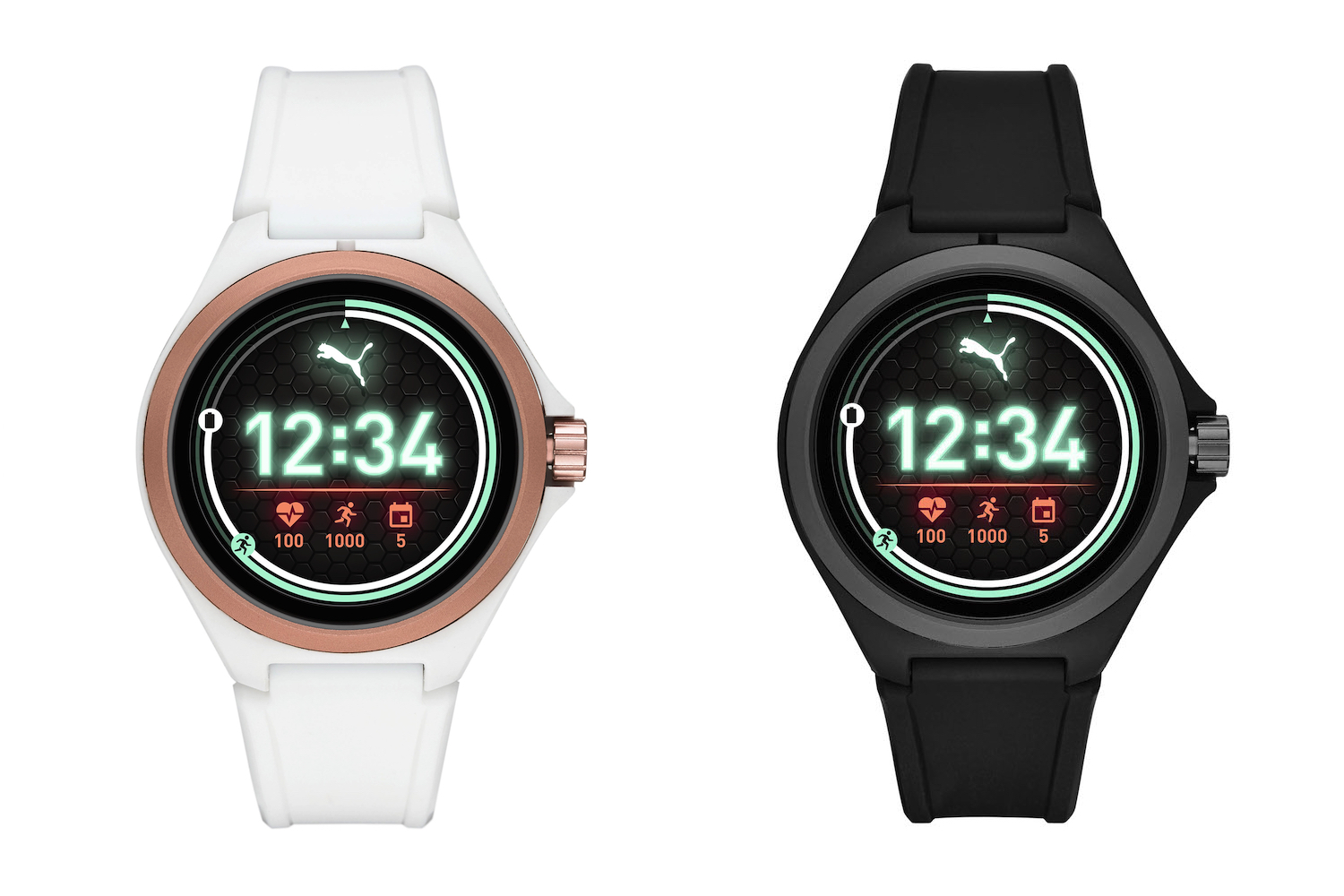
Designer Wear OS smartwatches with heart rate sensors and swim-proof bodies are aplenty, but due to the fashion-forward designs, they don’t often look at home in the gym or out running. Here’s the solution: sports and lifestyle brand Puma has made its first smartwatch running Google’s Wear OS platform, and it’s perfect for anyone who doesn’t want to wear a gold or stainless steel smartwatch when lifting weights, or pounding the streets.
The Puma Smartwatch resembles Fossil’s own Sport smartwatch. It’s compact for all wrist sizes and comes with the Qualcomm Snapdragon Wear 3100 chip inside. But unlike the recently-announced Fossil Gen. 5 smartwatch, it only has 512MB of RAM and 4GB of storage space — that might mean performance won’t be as reliable. You do get a heart rate sensor on the back, and built-in GPS inside the watch so you don’t have to carry your phone on a run if you want to map it.
It’s the design you’ll want though. The body is slim and lightweight, with sporty fluted side panels made of nylon material, covering an aluminum case. The oversized crown has an easy-to-grip texture and the Puma logo on the end. Twist it and it scrolls through the menu on the screen, and press it to confirm an action. Puma has taken the wise decision not to make the watch look over-the-top, but has shifted away from the minimal look of the Fossil Sport.

A silicone strap holds the watch on your wrist, complete with a Puma-branded clasp, and the underside of the strap has channels to maintain airflow and stop it from getting sweaty. A black version is joined by a rose gold and white model, but the yellow and black Puma Smartwatch really catches the eye. It’s not subtle, but it’s far from being too in-your-face. It’s definitely the version those who like to make a statement at the gym will choose.
What else? The watch runs Google’s Wear OS software and therefore has Google Assistant and Google Pay installed, plus Google Fit to track workouts and steps. Puma has added a selection of watch faces, although the only one we’ve seen so far is the “Scorecard” option, which shows fitness and heart rate data alongside the time. The Puma Smartwatch comes with a weather app, plus Spotify for music, and will connect with your smartphone regardless of whether it runs Android or iOS.
The Puma Smartwatch will be released in November through Puma’s own website and retail partners. It costs $275.
Editors' Recommendations
- The OnePlus Watch 2 is the Wear OS smartwatch I’ve been waiting for
- How one company made CES the best place for Wear OS watches
- Google and Qualcomm are changing Wear OS smartwatches forever
- Wear OS 4 is coming to your smartwatch this year — here’s what’s new
- Fossil’s first Wear OS 3 smartwatch looks like a better (and cheaper) Pixel Watch




